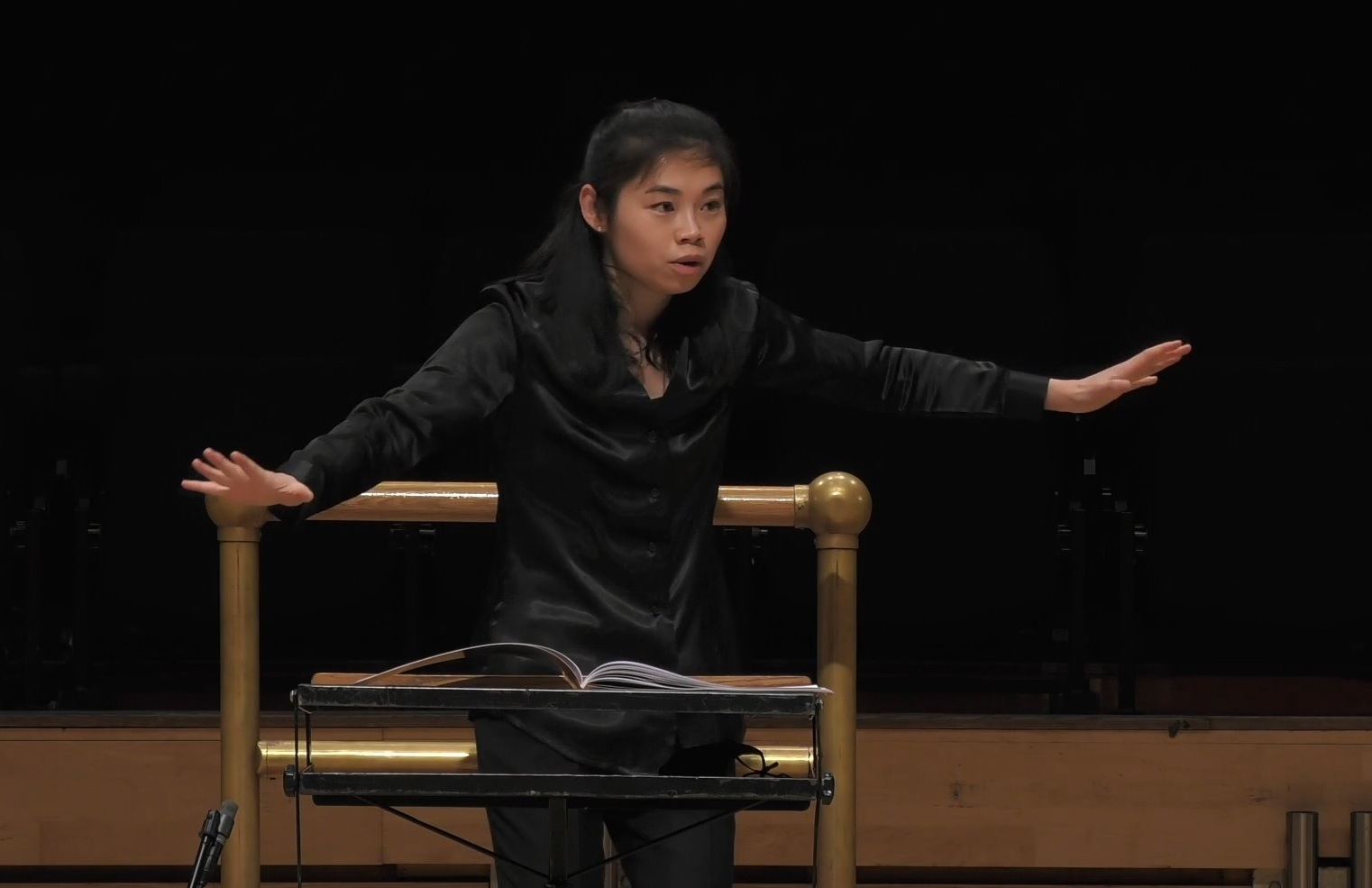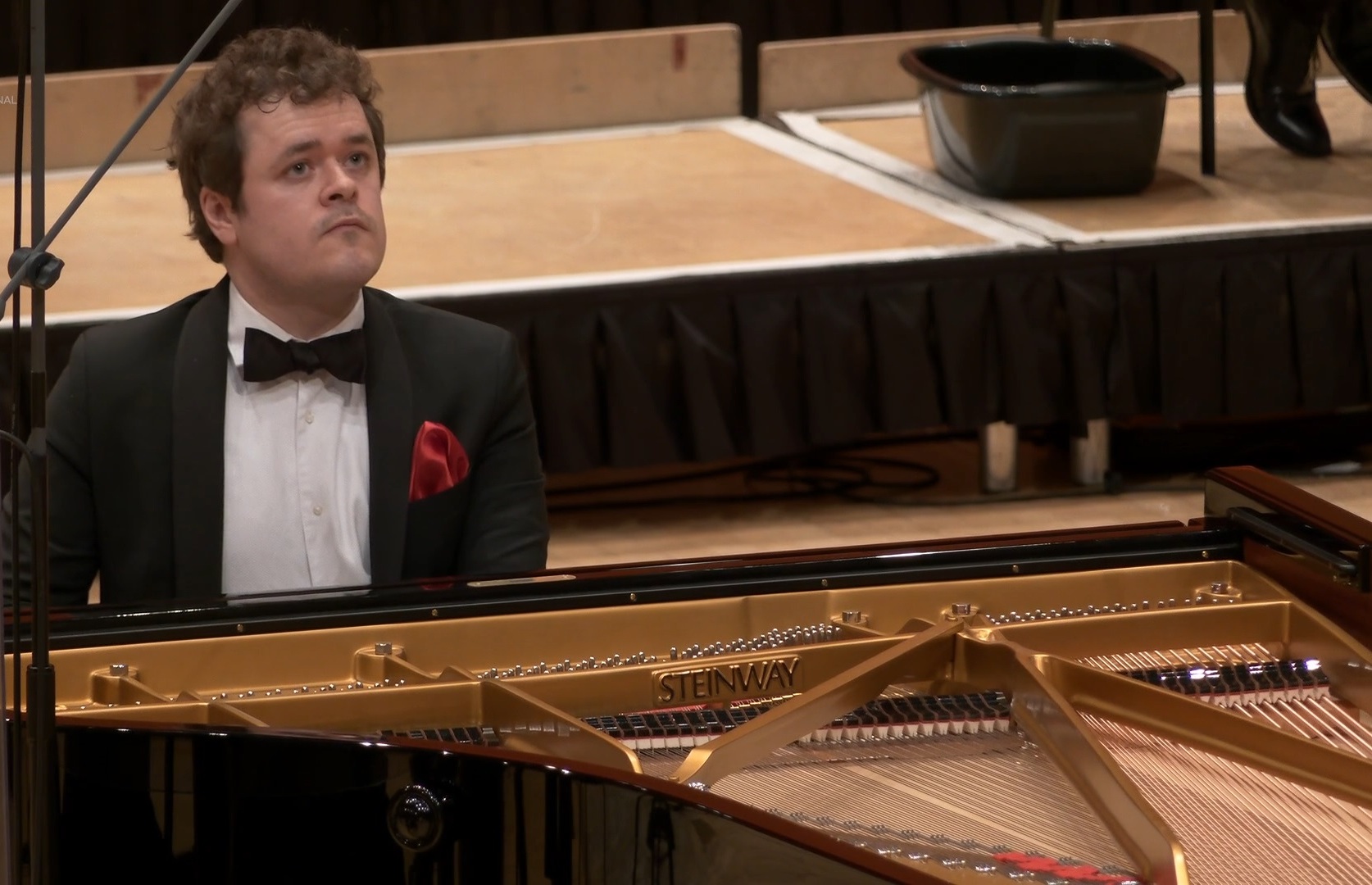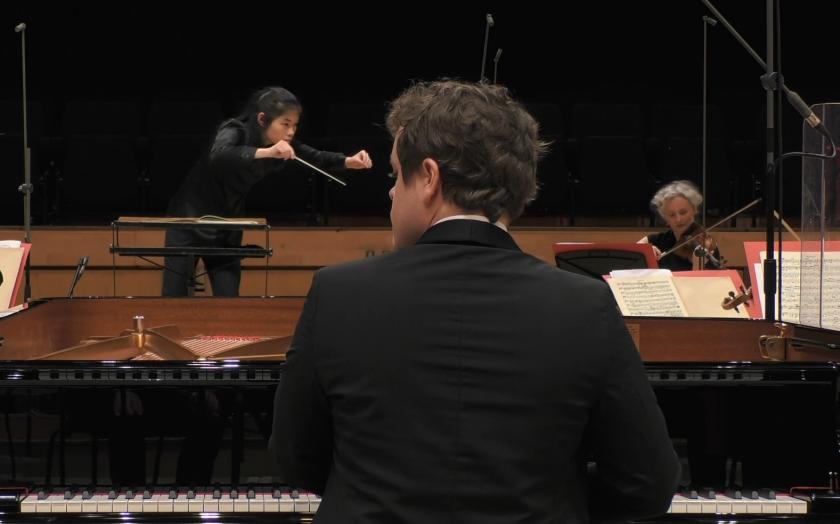By chance, I started watching this streamed concert shortly after hearing a live BBC broadcast of the Philharmonia playing in front of an audience for the first time in over a year. Much though I love the Royal Scottish National Orchestra, steadfast companion over many Edinburgh winters, from student standby to bus pass, there is no doubt where I would have rather been. A link, a click and a screen in my office do not even approach the palpable excitement in the Royal Festival Hall that evening (David Nice was there and confirmed that in his review). Orchestral music needs an audience, and it is a tantalising aspect of these last months of the pandemic that this luxury is so unevenly distributed around the country.
That said, this is an immaculately presented video, recorded on 13 May in the Glasgow Royal Concert Hall, and forming part of the RSNO’s Polska Scotland series. The concerts are supported by the Adam Mickiewicz Institute as part of the international cultural programme marking the centenary of Poland’s regained independence. The series includes both Szymanowski violin concertos, Panufnik’s Sinfonia Sacra, and more Lutosławski than anyone would dare programme in front of a live audience. These are riches indeed, suggesting that the consolation of the pandemic is that programmers can be more innovative when they don’t need 2000 bums on seats to make a performance a success.  The concert opens with a rarity, Orawa, by Wojciech Kilar, a composer perhaps better known for the music behind Coppola’s Dracula, or Polanski’s The Pianist. Orawa is a short but vigorous portrait, for large string orchestra, of the dramatic landscape in southern Poland near the Tatra mountains – indeed it was first performed in Zakopane, in 1986. Driven forward by a relentless rhythmic pulse, it brings to mind the clear, insistent melodies of Janáček with an overlay of Sibelian grandeur. Principal guest conductor Elim Chan (pictured above) takes no prisoners, with a beat so decisive it almost defeats video digitisation, but she makes for a thrilling ride, with two endings: the first a civilised cadence, the second, after enough of a pause for the non-existent audience to clap, ending with an ecstatic vocalised “whoop!” from the entire orchestra.
The concert opens with a rarity, Orawa, by Wojciech Kilar, a composer perhaps better known for the music behind Coppola’s Dracula, or Polanski’s The Pianist. Orawa is a short but vigorous portrait, for large string orchestra, of the dramatic landscape in southern Poland near the Tatra mountains – indeed it was first performed in Zakopane, in 1986. Driven forward by a relentless rhythmic pulse, it brings to mind the clear, insistent melodies of Janáček with an overlay of Sibelian grandeur. Principal guest conductor Elim Chan (pictured above) takes no prisoners, with a beat so decisive it almost defeats video digitisation, but she makes for a thrilling ride, with two endings: the first a civilised cadence, the second, after enough of a pause for the non-existent audience to clap, ending with an ecstatic vocalised “whoop!” from the entire orchestra.
A complete change of texture follows: Chopin’s erroneously numbered First Piano Concerto (it was published before but composed after No. 2) with the still-young British pianist Benjamin Grosvenor (pictured below) as soloist. To achieve the necessary social distancing the stage is unusually configured with the lid removed and the piano in the heart of the orchestra, the tail pointing at Chan such that soloist and conductor form an axis down the middle of the orchestra. For Grosvenor I imagine this is quite revealing. Most concerto pianists are used to hearing violins in one ear and audience sneezes in the other – under this arrangement he is happily immersed in the violas with woodwind behind.  It's an impressively precise performance but somewhat lacking in nuance. Chan’s beat is as firm as ever and I get the impression that even if Grosvenor wanted to sneak in a bit more rubato it would not be permitted. He pulls the melody about a bit in the coda of the first movement but by and large this is a performance true to the classical model that inspired Chopin.
It's an impressively precise performance but somewhat lacking in nuance. Chan’s beat is as firm as ever and I get the impression that even if Grosvenor wanted to sneak in a bit more rubato it would not be permitted. He pulls the melody about a bit in the coda of the first movement but by and large this is a performance true to the classical model that inspired Chopin.
All change again for the last piece in the programme, Lutosławski’s magisterial Concerto for Orchestra. This is shorter than the Chopin, but feels longer and grander, with massive brass chorales, scintillating percussion, and brilliant writing, as the name suggests, for every part of the orchestra, including a one note bravura outing for the celeste. If there is any piece that deserves a huge orchestra playing live to a packed house, this is it. Now, with hindsight, we can see that while the Chopin concerto, politely restrained, sits quite comfortably in a video performance; the two pieces on either side of it have by contrast an exuberant energy that is barely contained by computer screen and speakers.
The performances all receive applause. The conductor applauding the orchestra, the orchestra applauding the soloist, everyone applauding everyone else. Such incontinent clapping was once a source of irritation, but along with everything else in this loopy Coronavirus world, I have come to accept it, even welcome it, for the hope it keeps alive that we will once again have proper audiences, clapping wildly, everywhere.















Add comment